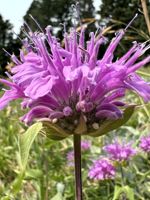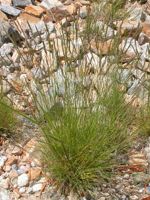Mon-Fri 9am - 5pm Mountain time
Wild Bergamot vs Idaho Fescue
Monarda fistulosa
Festuca idahoensis
NOT AVAILABLE THIS SEASON - MIGHT RETURN
CUSTOM GROW
Wild Bergamot is a native perennial wildflower that is known for its fragrant lilac-purple tubular flowers. The flowers grow in dense terminal heads and bloom from mid-summer to early fall. Deadheading spent flowers will encourage new blooms, prolonging its display. They attract pollinators such as bees, butterflies, and hummingbirds. It also serves as a host plant for the Raspberry Pyrausta (Pyrausta signatalis) butterfly.
Wild Bergamot belongs to the mint family, and its leaves, stems, and flowers are all edible. The leaves can be used to make tea or as a flavorful herb, with a taste often described as a blend of oregano and thyme.
It is resistant to deer and rabbits but can be susceptible to powdery mildew if planted too densely with poor air circulation. Wild Bergamot tolerates heat, drought, and poor soils, making it a low-maintenance addition to a variety of projects. It is well suited for pollinator gardens, wildflower gardens and naturalization projects.
Idaho Fescue is a native perennial bunchgrass recognized for its fine-textured, blue-green foliage. Its dense, tufted growth and deep root system make it drought-tolerant and effective at stabilizing soils, particularly on slopes and open grasslands. Its upright, arching form and dense clumps give it strong ornamental value in both natural and designed landscapes.
This hardy grass provides cover for wildlife and forage for grazing animals, while also supporting soil health and habitat diversity. Idaho Fescue is well-suited for erosion control, ecological restoration, naturalization, xeriscaping, and habitat enhancement projects.

